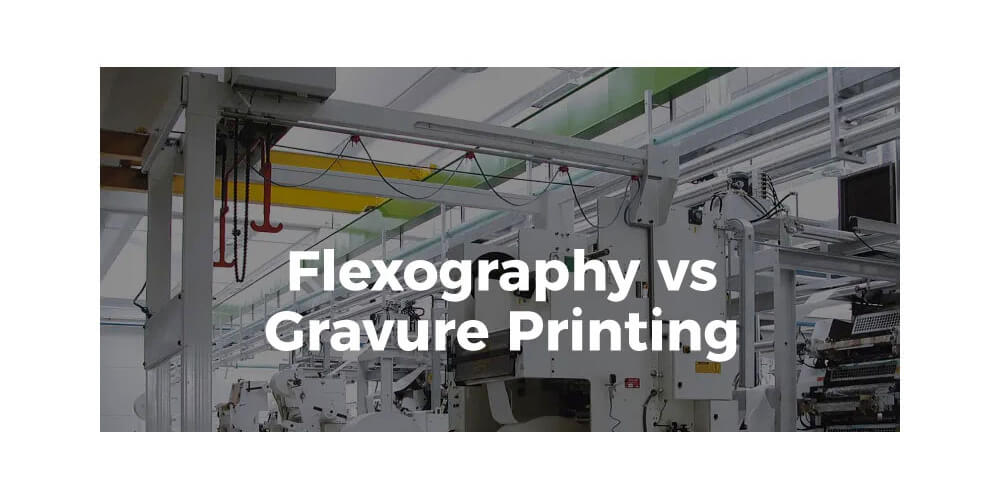Gravure printing is an intaglio printing technique. Intaglio refers to a printing technique where the ink is laid on recessed parts of the intended printing form. In this method, an engraved cylinder with cells where ink is placed is used. At the beginning of the process, the cylinders are impressed with the intended image. The same process is also used in rotary printing. This technique is used for producing continuous tone images. Gravure printing equipment features five main parts: cylinder, ink fountain, doctor blades, impression roller, and dryer. Gravure printing is often compared to flexographic printing. In this post, we discuss similarities and differences between gravure and flexographic printing.
What is flexographic printing?
Flexographic printing is a relief printing technique often referred to as a modern version of letterpress printing. In this method, the ink is transferred to the substrate from a raised printing plate. Fast-drying inks are used, and the process can include a wide range of substrates.
Similarities between flexographic and gravure printing
Below are some significant similarities between gravure and flexo printing technologies;
- Both techniques feature high production speeds. For instance, in flexo printing, the machines run at remarkably high speeds. On the other hand, gravure planting machinescan print continuous image tones at a fast rate. However, among the two, flexo printing is believed to be faster.
- Both techniques produce high print quality. Gravure printingis known for making pieces with better ink laydown and consistent quality. Gravure printing also manufactures Flexo printing known to produce impeccable prints.
- Both technologies involve the creation of printing sleeves or plates.
Differences between gravure and flexographic printing technologies
The two techniques feature some significant differences other than the definition and process. Below are some significant ones;
- Gravure is the only high-speed printing technique that can print with high intricacy. In contrast, flexographic is used for more straightforward and less intricate prints. Regardless of such, they can both hold their own.
- Gravure printing technologyis very costly. This is especially true during the process of replacing the cylinders. Note that the cylinders also have to be replaced after at least 18 months. The production costs of this printing method are also not as competitive. On the other hand, flexographic printing is one of the most cost-efficient printing methods. However, practitioners in the industry argue that the quality of the prints produced in gravure printing is worth the extra cost.
- Another significant difference is that flexo printingdoes not produce the amount of color intensity that gravure printing does. Gravure printing employs the use of impression rollers, which help ensure color vibrancy.
- Additionally, gravure printing is perfect for porous substrates hence the reason why it is used to make magazine covers. On the other hand, flexo printing can be used on both porous and non-porous substrates.
- Gravure printing uses a limited number of inks. However, with flexo technology, the options are more.
Conclusion
Recently, following the increased consideration of sustainability, companies consider environmental impacts when choosing printing techniques. In this case, flexo takes the lead. However, when it comes to elements like quality and durability, gravure takes the lead.
